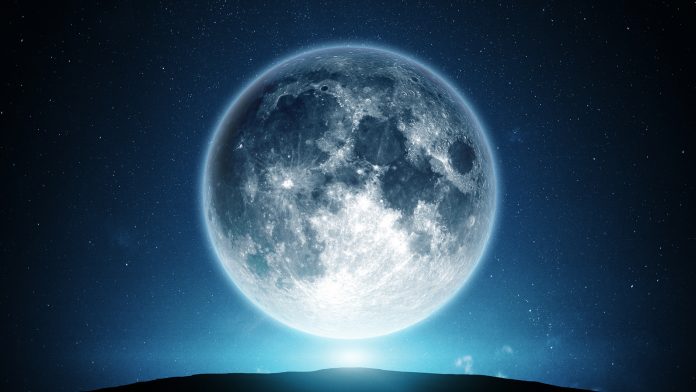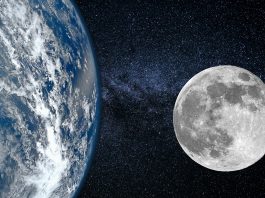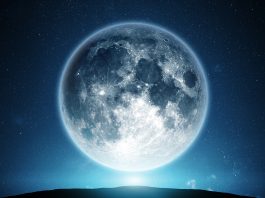In a new study, scientists believe that another source of lunar water could involve the Earth’s magnetosphere.
Hydrogen and oxygen ions escaping from Earth’s upper atmosphere and combining on the Moon could be one of the sources of the identified lunar water and ice, according to new research conducted by Geophysical Institute scientists from the University of Alaska, Fairbanks.
The research led by the UAF Geophysical Institute Associate Research Professor, Gunther Kletetschka, contributes to a growing body of research regarding water at the Moon’s North and South Poles.
Discovering lunar water is key to NASA’s Artemis project, which is investigating the planned long-term human presence on the Moon – NASA intends to send humans back to the Moon this decade.
“As NASA’s Artemis team plans to build a base camp on the Moon’s South Pole, the water ions that originated many eons ago on Earth can be used in the astronauts’ life support system,” Kletetschka explained.
This new research suggests that the Moon’s polar regions could potentially hold up to 3,500 cubic kilometres — 840 cubic miles — or more of surface permafrost or subsurface liquid water, which is created from ions that escaped Earth’s atmosphere. This volume is comparable to North America’s Lake Huron, the world’s eighth-largest lake. Researchers based this total on the lowest volume model calculation — 1% of Earth’s atmospheric escape reaching the moon.
Lunar water source
The majority of lunar water is generally believed to have been deposited by asteroids and comets that collided with the Moon. Most of this is assumed to have occurred during a period known as the Late Heavy Bombardment. In that period, about 3.5 billion years ago when the solar system was about 1 billion years old, it is argued that the early inner planets and Earth’s Moon sustained unusually heavy impacts from asteroids.
Scientists also hypothesise that solar wind is another main source of lunar water. The solar wind carries oxygen and hydrogen ions, which may have combined and been deposited on the Moon as water molecules.
Now, however, through new research, scientists have an additional source to explain how water accumulates on the Moon.
The research was published 26 March in the journal Scientific Reports in a paper authored by Kletetschka and co-authored by PhD student, Nicholas Hasson of the Geophysical Institute and UAF Water and Environmental Research Centre at the Institute for Northern Engineering. Several colleagues from the Czech Republic are also among the co-authors.
Earths atmosphere
Kletetschka and his colleagues suggest that hydrogen and oxygen ions are driven into the Moon when it passes through the tail of the Earth’s magnetosphere, which it does on five days of the Moon’s monthly trip around the planet. The magnetosphere is the teardrop-shaped bubble created by Earth’s magnetic field that shields the planet from much of the continual stream of charged solar particles.
Recent measurements from multiple space agencies — NASA, European Space Agency, Japan Aerospace Exploration Agency and Indian Space Research Organisation — revealed significant numbers of water-forming ions present during the Moon’s transit through this part of the magnetosphere. These ions have slowly accumulated since the Late Heavy Bombardment.
Magnetosphere’s tail
The presence of the Moon in the magnetosphere’s tail, called the magnetotail, temporarily affects some of Earth’s magnetic field lines — those that are broken, and trail off into space for many thousands of miles. Not all of Earth’s field lines are attached to the planet at both ends; some have only one attachment point.
The Moon’s presence in the magnetotail causes certain broken-field lines to reconnect with their opposing broken counterpart. When that happens, hydrogen and oxygen ions that had escaped Earth rush to those reconnected field lines and are accelerated back toward Earth.
The paper’s authors suggest that many of those returning ions hit the passing Moon, which has no magnetosphere of its own to repel them. “It is like the moon is in the shower — a shower of water ions coming back to Earth, falling on the Moon’s surface,” Kletetschka said.
The ions then combine to form the lunar permafrost. Some of that, through geologic and other processes such as asteroid impacts, is driven below the surface, where it can become lunar water.
The research team used gravitational data from NASA’s Lunar Reconnaissance Orbiter to study polar regions along with several major lunar craters. Anomalies in underground measurements at impact craters indicate locations of fractured rock conducive to containing liquid water or ice. Gravity measurements at those subsurface locations suggest the presence of ice or liquid water, concluded the researchers.









